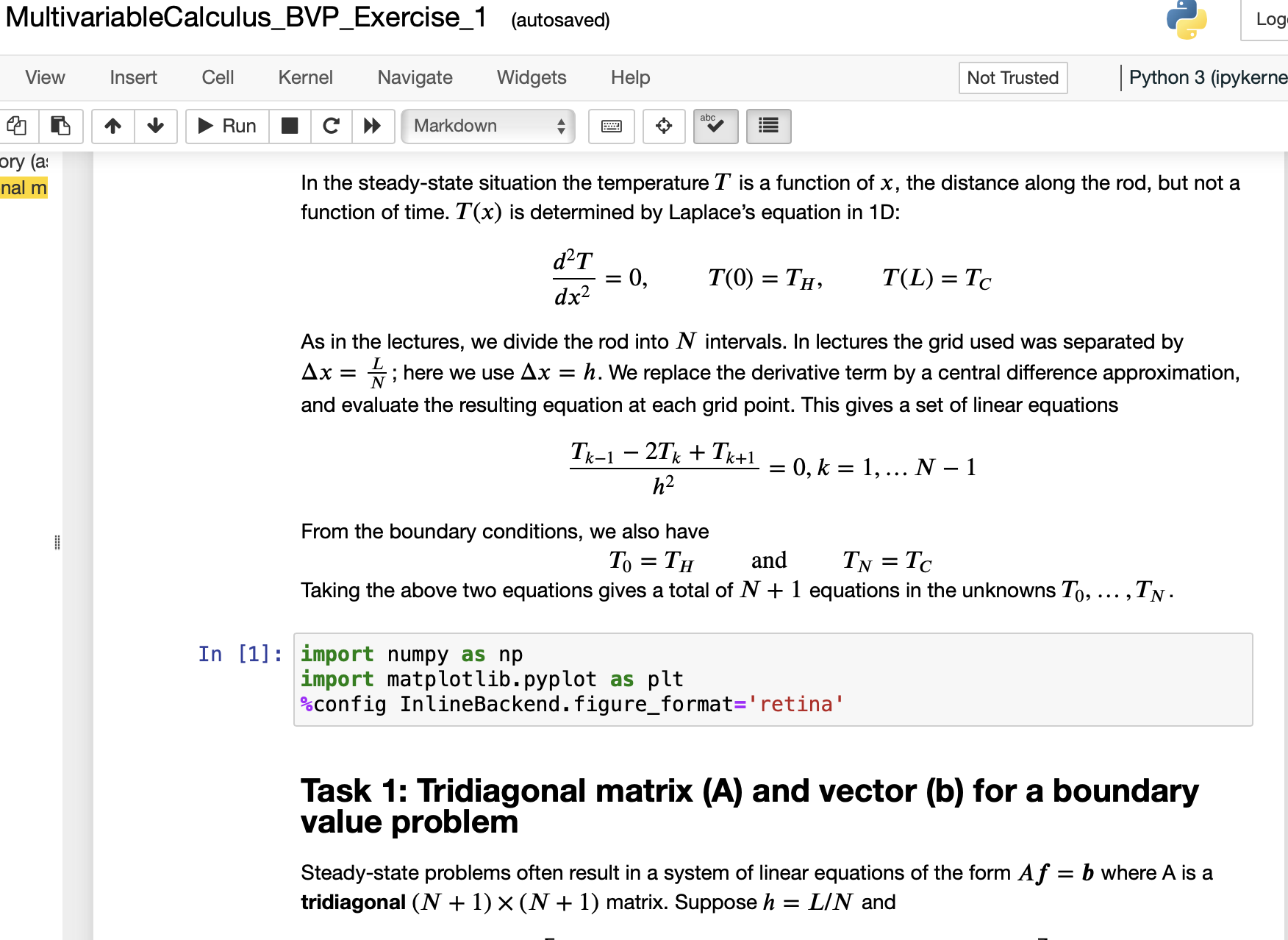Answered step by step
Verified Expert Solution
Question
1 Approved Answer
A = [ 1 ? ? ? ? 1 h 2 - 2 h 2 1 h 2 ? ? ? 1 h 2 -
a Code a function for A for a given number of steps The easiest way to do this is to define three
column vectors containing the entries of the main diagonal entries subdiagonal entries and
superdiagonal entries The npones command is useful here:
These vectors can be combined into a tridiagonal matrix using the npdiag command: # superdiagonal entries
sup
These vectors can be combined into a tridiagonal matrix using the diag command:
# create tridiagonal matrix
diagdiagdiag
Your function should take arguments and and return the matrix In the steadystate situation the temperature is a function of the distance along the rod, but not a
function of time. is determined by Laplace's equation in D:
As in the lectures, we divide the rod into intervals. In lectures the grid used was separated by
; here we use We replace the derivative term by a central difference approximation,
and evaluate the resulting equation at each grid point. This gives a set of linear equations
dotsN
From the boundary conditions, we also have
and
Taking the above two equations gives a total of equations in the unknowns dots,
In : import numpy as np
import matplotlib.pyplot as plt
config InlineBackend.figureformat'retina'
Task : Tridiagonal matrix A and vector b for a boundary
value problem
Steadystate problems often result in a system of linear equations of the form where is a
tridiagonal matrix. Suppose and

Step by Step Solution
There are 3 Steps involved in it
Step: 1

Get Instant Access to Expert-Tailored Solutions
See step-by-step solutions with expert insights and AI powered tools for academic success
Step: 2

Step: 3

Ace Your Homework with AI
Get the answers you need in no time with our AI-driven, step-by-step assistance
Get Started


